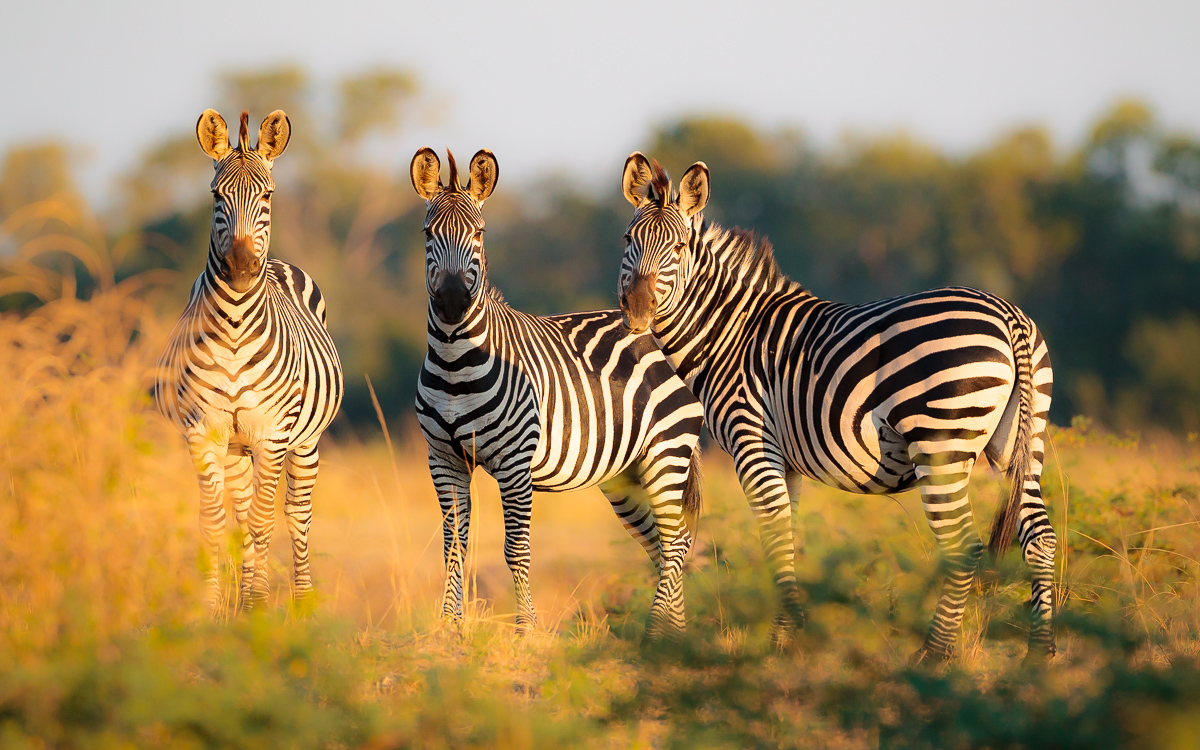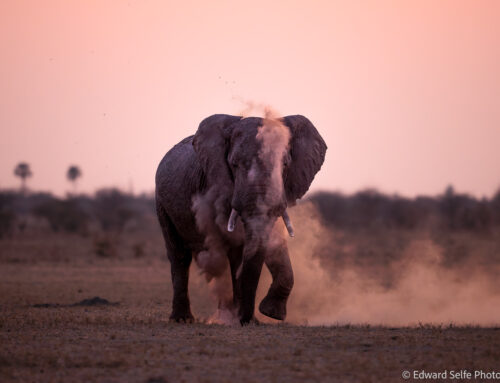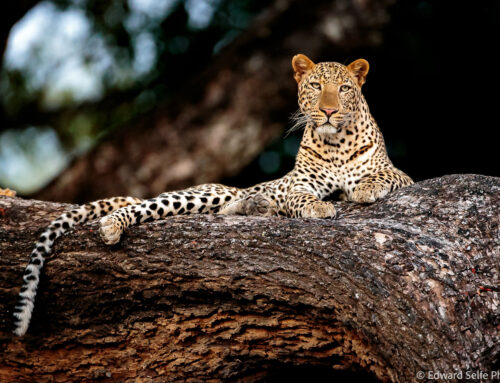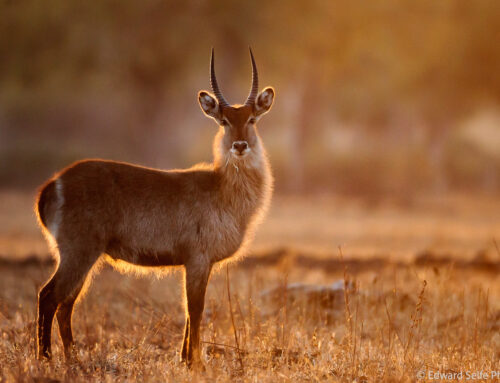It’s one of most common recommendations offered to aspiring wildlife photographers….”Get low, below the subject’s eye level or even lower if possible”.
This has given rise to the common sight of a vehicle-full of people descending the side-steps and throwing themselves on the ground with their cameras to get that low-angle shot that they’re looking for.
And yes, I will admit, the effect is dramatic: compared to looking ‘down’ on the animal from above, the angle is flattering, giving more focus on the subject and often rendering the background nice and blurry. And there we hit the crux of the issue for me: blurry backgrounds are heavily sought after in wildlife photography because they draw the eye to the subject and remove the ‘messy’ background bushes and scrub. But, I think they are also sought after because they represent the effect generated by the large telephoto lenses that professionals have invested in for their craft.
I absolutely agree that being able to isolate the background to focus attention is a useful capability, but I don’t think it means that any portrait of an animal with a buttery background is necessarily a good image.
Take this image for example:
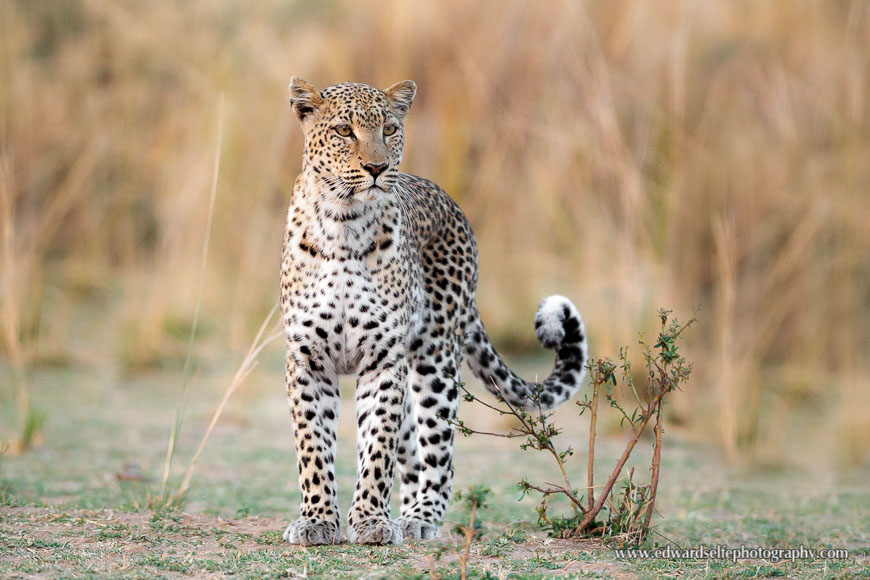
For me, the low angle is much more about getting an angle on the subject which is natural, seeing the animal eye-to-eye rather than from the safety of our lofty height. I also like to show animals in their environment (the leopard above could be on any open plain worldwide and you wouldn’t be able to tell). For this reason, getting low down shows the environment behind the subject rather than below it.
Have a look at this image here:
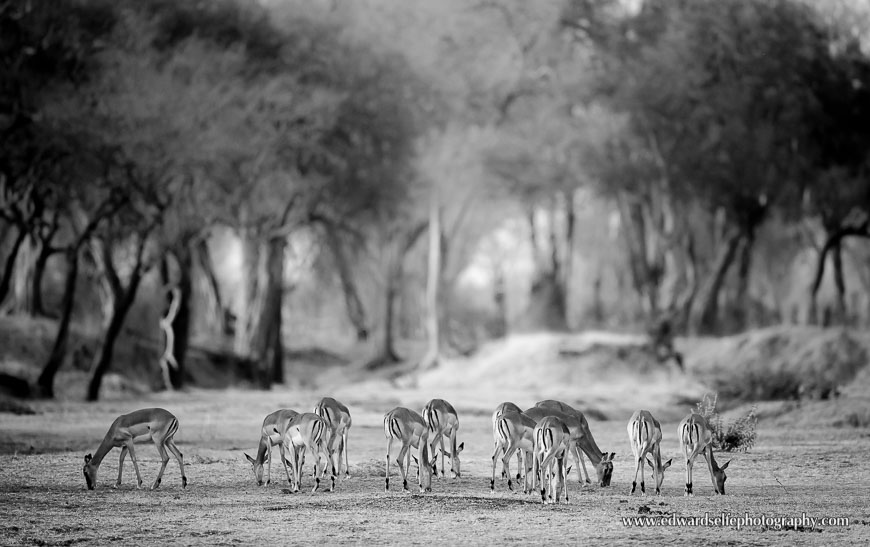
Another way of showing context and environment is to include bush and vegetation in front of the subject. For a long time, I tried to get clear views of my subjects but as I experimented with other options, I found that foreground detail was very useful in giving depth to the image:
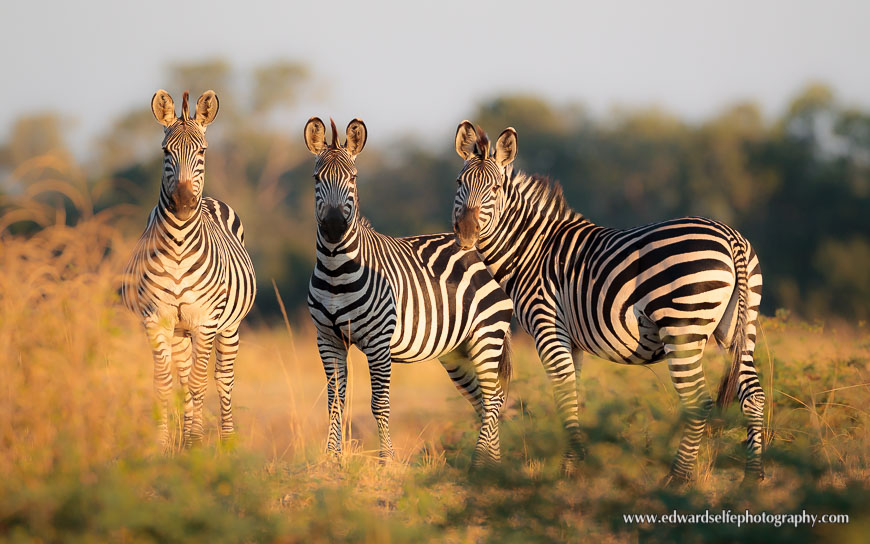
This makes me sound like I am slamming all images with blurry backgrounds. I am absolutely not. I use the technique and I love it in many of my shots. I just wanted to offer an alternative opinion and suggest that photographers consider when this is the right technique to use, and when it’s better to draw back and show the environment too.
Comments
![]() By Edward Selfe: Many thanks Joseph. I am glad you like that image – it’s one of my favourites too. I am sure you have a good eye for composition with your artists’ experience. Good luck with it.
By Edward Selfe: Many thanks Joseph. I am glad you like that image – it’s one of my favourites too. I am sure you have a good eye for composition with your artists’ experience. Good luck with it.
Edward

